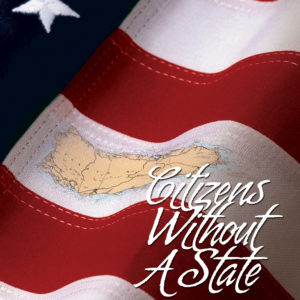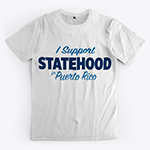By 1800, the Northwest Territory had been divided into two parts: Ohio and Indiana. Indiana Territory formed the western border of the Ohio Territory. Ohio was already in the transition to statehood and would be recognized as a State of the Union in 1803.
The new Indiana Territory was governed by Congress under the rules of the Northwest Ordinance, a set of rules made by Congress for governing territories and moving them toward statehood. As its population and political cohesion increased, the territorial government advanced through the usual stages of self-government leading to statehood.
First, after the new territory was formed in 1800 the President appointed a well-known federal territorial leader, William Henry Harrison, to be Governor. Harrison had been elected to serve as the non-voting Delegate to the House of Representatives for the Northwest Territory before it was divided into Ohio and Indiana.
After serving as Governor of Indiana he became a famous U.S. Army General in the “Indian Wars” and the War of 1812. Then Harrison was elected by voters in Ohio to Congress, first in the House and then the Senate, before being elected President of the United States.
The second stage of territorial political development came in 1805, when the U.S. citizens of the Indiana Territory formed a territorial legislature. Because the territorial government did not have effective control and support over the entire area under its jurisdiction, in 1809 the territory was divided by Congress and the Territory of Illinois was formed.
Just as the formation of Indiana had defined the western boundary of Ohio, the formation of Illinois formed the western border of Indiana. This set the stage for Indiana to follow the same Northwest Ordinance model as Ohio in seeking admission as a State of the Union.
In 1811 the territorial legislature petitioned Congress for statehood, and in 1812 a House committee recommended lowering the population threshold under the Northwest Ordinance from 60,000 to 35,000. But strife between the Native Americans and the new settlers, as well as the War of 1812, derailed that effort.
By 1815 there was peace and the territorial population of Indiana was over 63,000. The territorial legislature again applied to Congress for statehood. The petition they sent included a ground-breaking list of things that the territory wanted to make sure would be considered in the transition to statehood:
- A statehood constitution to be determined in a territorial convention in 1816.
- Transfer to the new state of a percentage (7%) from all federal government revenues from sale of federal public lands before or after admission, including lands “purchased” under agreements reached with the Native American peoples.
- Transfers of some federal lands to the state for public schools and other state purposes.
- Recognition of the diversity of the population and freedoms expected to continue under statehood, including the rights enjoyed under the Northwest Ordinance and the Constitution.
- Rights to be honored include freedom from slavery as already provided under Northwest Ordinance.
Less than a year after this petition was delivered to Congress in December of 1815, the Indiana Territory was admitted as the 19th State of the Union. First Congress passed an enabling act that called for the territory to adopt a statehood constitution, and that was accomplished by August 1816, followed by the admissions act adopted by Congress in December of 1816.
The admission of Indiana set numerous precedents relevant to other territories that became states, and to Puerto Rico. First, Congress made liberal concessions to the new state, including 5% of the proceeds of federal land sales in the territory to put state finances on a sound footing. Secondly, Congress made generous grants of lands for public schools and the state seat of government, as the statehood petition had requested.
Finally, it is interesting to note that William Henry Harrison was the first but not the last Governor of a territory to later become President of the United States. A century later William Howard Taft would be appointed Governor of the Philippines when it was a U.S. territory. Unlike all previous territories governed under the Northwest Ordinance model, the people of the Philippines territory were not citizens of the U.S.
That meant the Philippines were governed under the “unincorporated territory” model leading to independent nationhood, instead of the Northwest Ordinance model leading to statehood. Later as President and subsequently as Chief Justice of the U.S. Supreme Court, Taft played an influential but controversial role in denying to U.S. citizens in Puerto Rico the rights conferred under the Northwest Ordinance model for U.S. citizens in Indiana in 1800.








One response
[…] surrendered its claims over the vast territory named Indiana after its tribal inhabitants, under the 1778 treaty of peace ending the Revolutionary War. At the […]